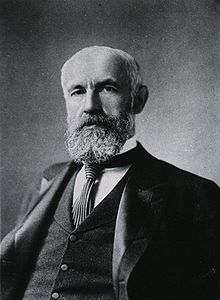User:Kporterf/sandbox
Development of Early Theories
The formal study of adolescence began with the publication of G. Stanley Hall’s Adolescence in 1904. Hall, who was the first president of the American Psychological Association, viewed adolescence primarily as a time of internal turmoil and upheaval. He believed that adolescence was a representation of our human ancestors’ phylogenetic shift from being primitive to being civilized. Hall’s assertions stood relatively uncontested until the 1950s, when psychologists such as Erik Erikson and Anna Freud started to formulate their own theories about adolescence. Freud believed that the psychological disturbances associated with adolescence were biologically based and culturally universal, while Erikson focused on the dichotomy between identity formation and role fulfillment. [1]

Even with their different theories, these three prominent psychologists agreed that adolescence was inherently a time of disturbance and psychological confusion. The less turbulent aspects of adolescence, such as peer relations and cultural influence, were left largely ignored until the 1980s. From the ‘50s until the ‘80s, the focus of the field was mainly on describing patterns of behavior as opposed to explaining them. [2]
Another prominent researcher in the field of adolescent development was sociologist Glen Elder. In the 1960s, Elder drew on information put forth by other researchers to propose a life-course perspective of adolescent development. Elder focused on research conducted at the Universities of Oakland and Berkeley, which examined children born in the age of The Great Depression. Elder asserted some basic principles of adolescent development that fit with his life-course approach. The principle of historical time and place states that an individual’s development is shaped by the time period and location in which they grow up. The principle of the importance of timing in one’s life refers to the different impact that life events have on development based on when in one’s life they occur. The idea of linked lives states that one’s development is shaped by the interconnected network of relationships of which one is a part; and the principle of human agency asserts that one’s life course is constructed via the choices and actions of an individual within the context of their historical time period and social network.[3]
In 1984, the Society for Research on Adolescence (SRA) became the first official organization dedicated to the study of adolescent psychology. Some of the issues first addressed by this group include: the nature/nurture debate as it pertains to adolescence; understanding the interactions between adolescents and their environment; and considering culture, social groups, and historical context when interpreting adolescent behavior. [4]
Early Studies on Adolescent Development
Two of the most influential early studies of childhood development were carried out in the 1930s by researchers at the Institute of Child Welfare at the University of California’s Berkeley campus. The studies took place during a period of history that included the Great Depression and World War II, providing unique historical circumstances under which a generation of children grew up. The Oakland Growth Study, carried out by Harold Jones and Herbert Stolz in 1931, aimed to study the physical, intellectual, and social development of children in the Oakland area. Data collection began in 1932 and continued until 1981, allowing the researchers to gather longitudinal data on the individuals that extended past adolescence into adulthood. Researcher Jean Macfarlane launched the Berkeley Guidance Study, which took place during the 1930s and examined the development of children in terms of their socioeconomic and family backgrounds. [5]
- ^ Lerner, R.M, & Steinberg, L.D. (2004). Handbook of Adolescent Psychology (2 ed.). Hoboken, NJ: John Wiley & Sons.
{{cite book}}: CS1 maint: multiple names: authors list (link) - ^ Lerner, R.M, & Steinberg, L.D. (2004). Handbook of Adolescent Psychology (2 ed.). Hoboken, NJ: John Wiley & Sons.
{{cite book}}: CS1 maint: multiple names: authors list (link) - ^ Elder, Glen (February 1998). "The life course as developmental theory". Child Development. 69 (1): 1-12. doi:10.1111/j.1467-8624.1998.tb06128.x.
{{cite journal}}: CS1 maint: date and year (link) - ^ Lerner, R.M, & Steinberg, L.D. (2004). Handbook of Adolescent Psychology (2 ed.). Hoboken, NJ: John Wiley & Sons.
{{cite book}}: CS1 maint: multiple names: authors list (link) - ^ "The Oakland Growth and Berkeley Guidance Studies of the Institute of Human Development at the University of California, Berkeley". University of North Carolina. Retrieved 4 October 2012.

